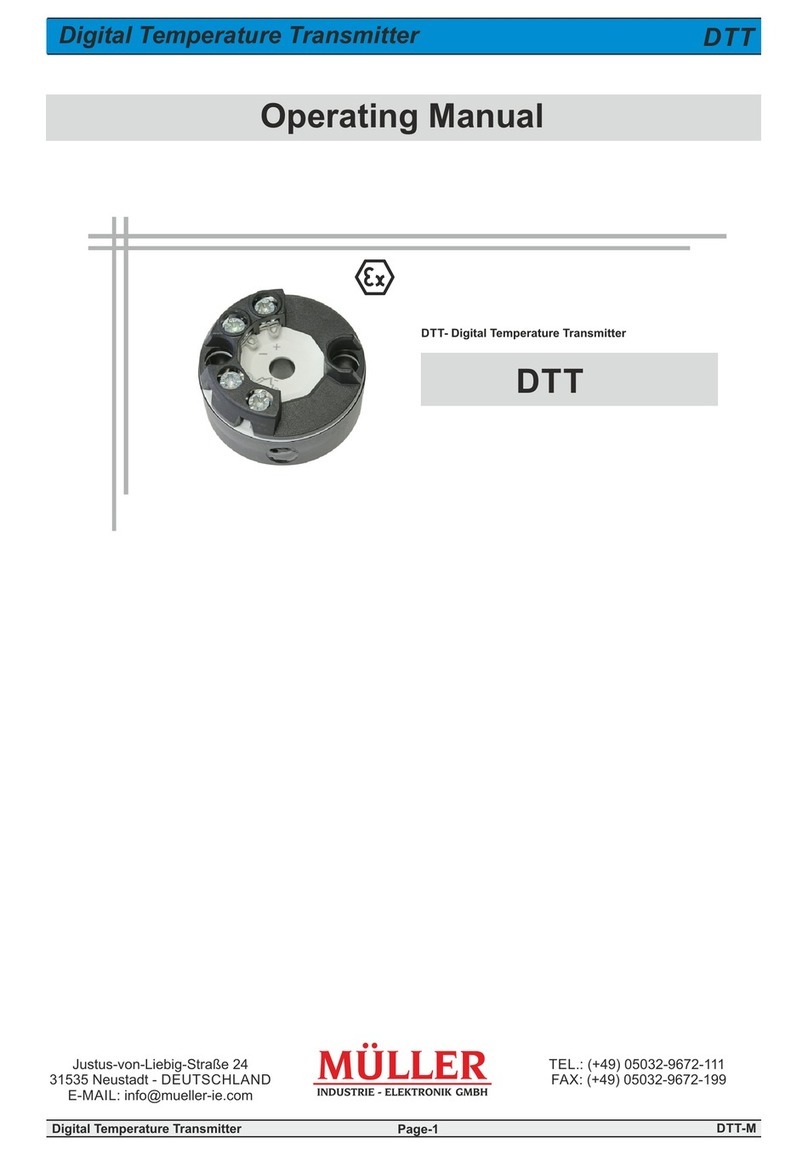
DTW-M
Digital Temperature Transmitter Page-4
3 Safety Instructions
3.1 Intended Use of the Product
!
Before installation, commissioning and operation select the appropriate digital DTW temperature
transmitter in terms of function and equipment.
Warning
The device has been designed and built solely for the intended use described here and may only be used
accordingly.
The technical specifications contained in these operating instructions must be observed. Improper handling or
operation of the device outside of its technical specifications requires the device to be taken out of service immediately
and an inspection by the manufacturer.
When the device is transported from a cold into a warm environment, the formation of condensation may cause the
device to malfunction. Before putting it back into operation, wait for the device temperature and the room temperature
to equalise.
The manufacturer shall not be liable for claims of any type based on operation contrary to the intended use.
!
Warning
3.2 Personnel Qualification
For installation and start-up of the DTW the personnel has to be familiar with the relevant regulations and directives of
the country and must have the required qualification. They must have knowledge of measurement and control
technology, have to be acquainted with electric circuits, are capable of carrying out the work described and can
independently recognise potential hazards.
The personnel needs to have the proper training for their work environment and has to comply with the current
regulations for safety at work as prescribed by law!
Working with devices for areas exposed to explosion hazards requires specialist knowledge!
The personnel needs to have knowledge about types of ignition protection, regulations and directives for equipment in
areas exposed to explosion hazards. Depending on operating conditions they need to have the corresponding
knowledge, e. g. of corrosive media.
Risk of injury if qualification is insufficient
Improper handling can result in considerable injuries and damage to equipment.
- The activities described in these operating instructions may only be carried out by skilled personnel who
have the qualifications described below.
- Keep unqualified personnel away from hazardous areas.
iMore safety instructions can be found in the individual chapters.
Allowed storage conditions:
- Storage temperature: -40...+85 °C
- Humidity: 95 % r. h. (condensation allowed)
For longer term storage avoid the following influences:
- Direct sunlight or proximity to hot objects
- Mechanical vibration, mechanical shock (rough deployment)
- Soot, vapour, dust and corrosive gases
If possible, store the device in its original package or an equivalent one
2.3 Storage
Do not remove packaging until just before mounting. Keep the packaging as it will provide optimum protection during
transport (e. g. change in installation site, returns).
2.2 Packaging
2 Transport, Packaging, Storage (Continued)




























